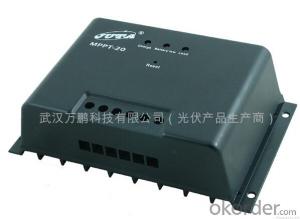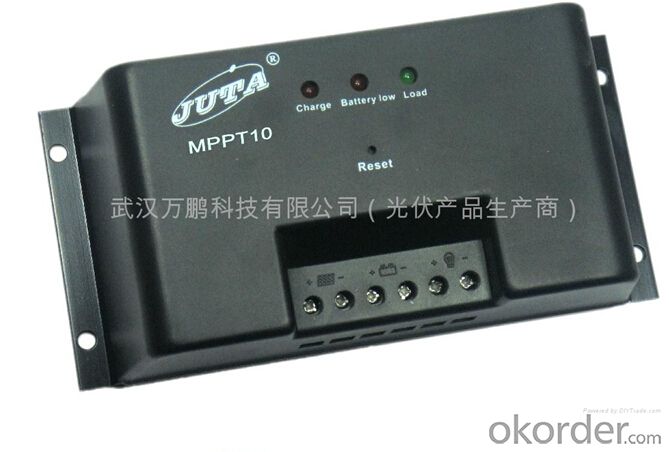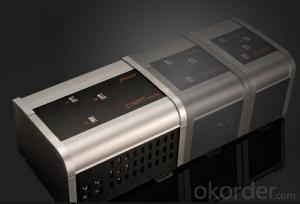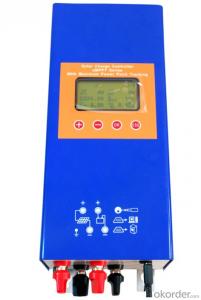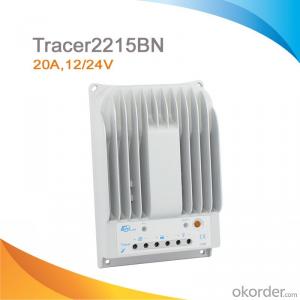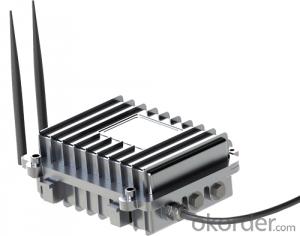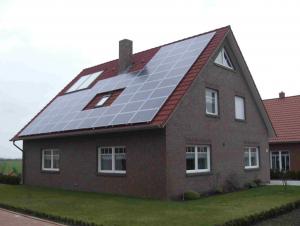Midnite Solar Controllers Maximum Power Tracking Solar Controller Model MPPT 20
- Loading Port:
- Shanghai
- Payment Terms:
- TT OR LC
- Min Order Qty:
- 5 unit
- Supply Capability:
- 150 unit/month
OKorder Service Pledge
OKorder Financial Service
You Might Also Like
1. Structure of MPPT Maximum Power Tracking Solar Controller Model MPPT 15/ MPPT 30
The controller is an indispensable part of solar system, this MPPT Maximum power tracking solar controller is remarkable, because it can adjust with intelligence the working voltage of solar panels, so that the solar panels can reach the maximum power spot of the V-A characteristics curve during the work. Compared with the common solar controller, this MPPt Maximum power tracking solar controller can increase the use ratio of the solar panels power by 10-30%.
2. Main Features of MPPT Maximum Power Tracking Solar Controller Model MPPT 20
· Protection against overcharging of the accumulator
· Protection against over discharging of the accumulator
· Protection against reverse discharging of the accumulator to solar panels
· Overload protection and short circuit protection
3. MPPT Maximum Power Tracking Solar Controller Model MPPT 20 Images
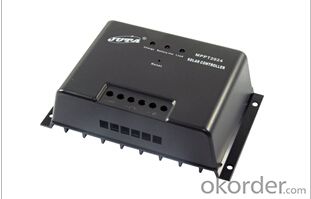
4. MPPT Maximum Power Tracking Solar Controller Model MPPT 20 Specification
Type | MPPT20-12/25 | MPPT20-24/50 |
Nominal Voltage | DC:12V | DC:24V |
Voltage scope available for Max. solar power tracking | 12-25V | 24-50V |
Max. open circuit voltage for solar energy | 25V | 50V |
Max. charging current | 20A(referring charging current from accumulator) | |
Max. discharging current | 20A | 20A |
No load losses | ≤8mA | ≤40mA |
Off voltage after full charging | 14V | 28V |
Off voltage when undervoltage | 10.5V | 21V |
Starting recovery voltage | 12.6V | 25.2V |
Efficiency | 95%~97% | |
5. FAQ
We have organized several common questions for our clients, which may help you sincerely:
a) How about your capacity?
We can produce 300,000 set inverter per year currently, 60,000 set solar energy charge controllers. And the product is sold towards domestic and Europe, Australia and Africa etc.
b) How to guarantee the quality of the products?
The company presses the ISO9000 quality management system control product quantity strictly, the export production all passes the relevant national company check (CE, ROHS), and get high evaluation of the customer.
c) How long can we receive the product after signing Sales Confirmation?
Generally speaking, if there is enough quantity of finished products which can meet the clients’ requirement, we can manage the delivery within three to five working days according to the instruction of the payment terms in the Sales Confirmation; if the products need some time to get ready, we will arrange the delivery as soon as possible after the manufacture.
- Q: Can a solar controller be used with portable solar panels?
- Yes, a solar controller can be used with portable solar panels. A solar controller helps regulate the charging process and protects the battery from overcharging. It can be especially beneficial for portable solar panels as it ensures optimal charging efficiency and prolongs the battery life.
- Q: Can a solar controller be used with solar panels in parallel or series configuration?
- Solar panels can be used with a solar controller in both parallel and series arrangements. The purpose of the solar controller is to manage the energy flow from the panels to the battery or load. It safeguards the battery by regulating the voltage and current from the panels, preventing overcharging or damage. In a parallel arrangement, multiple panels are connected to the solar controller by joining the positive terminals and the negative terminals. This setup increases the system's current capacity while maintaining a constant voltage. The solar controller continues to regulate the overall voltage and current to protect the battery. In a series arrangement, multiple panels are connected to the solar controller by linking the positive terminal of one panel to the negative terminal of the next, and so on. This configuration enhances the system's voltage capacity while keeping the current constant. The solar controller ensures that the battery is not overcharged by regulating the overall voltage and current. Regardless of whether the panels are connected in parallel or series, the solar controller is crucial for proper charging and battery protection. It monitors the voltage and current from the panels and adjusts the charging parameters accordingly. Therefore, a solar controller is necessary to optimize the charging process and ensure the battery's longevity.
- Q: How do you prevent battery overcharging with a solar controller?
- A solar controller prevents battery overcharging by regulating the charging process. It monitors the voltage of the battery and adjusts the charging current accordingly. Once the battery reaches its optimal charge level, the solar controller reduces or stops the charging to prevent overcharging, thus protecting the battery from potential damage.
- Q: Can a solar controller be used with a solar inverter?
- Yes, a solar controller can be used with a solar inverter. A solar controller helps regulate and optimize the charging and discharging of batteries in a solar power system, while a solar inverter converts the direct current (DC) generated by solar panels into alternating current (AC) for use in powering electrical devices. Both components work together to effectively manage and utilize solar energy in a renewable energy system.
- Q: What is the maximum charging power of a solar controller?
- The maximum charging power of a solar controller refers to the highest rate at which the controller can convert solar energy into electrical power to charge a battery or power a load. The specific maximum charging power of a solar controller can vary depending on the model and specifications of the controller. It is typically measured in watts (W) or amps (A). The maximum charging power is determined by factors such as the size and quality of the solar panel array, the efficiency of the controller's electronics, and the capacity of the battery being charged. It is important to consider the maximum charging power of a solar controller when designing or selecting a system to ensure that it can meet the power requirements of the intended application.
- Q: Can a solar controller be used with both lead-acid and lithium-ion batteries?
- Yes, a solar controller can be used with both lead-acid and lithium-ion batteries. However, it is important to ensure that the solar controller is compatible with the specific requirements and charging characteristics of each battery type.
- Q: Can a solar controller be used in a solar-powered street lighting system?
- Yes, a solar controller can be used in a solar-powered street lighting system. A solar controller is an essential component that manages the charging and discharging of batteries in a solar system. In a solar-powered street lighting system, the solar controller ensures the batteries are charged efficiently during the day and controls the power supply to the street lights during the night, optimizing energy usage and ensuring reliable operation.
- Q: How does a solar controller handle high voltage input from solar panels?
- A solar controller handles high voltage input from solar panels by utilizing a mechanism called maximum power point tracking (MPPT). MPPT technology allows the controller to optimize the voltage and current combination from the panels, ensuring maximum power output. It continuously adjusts the input voltage to match the battery's charging requirements, efficiently converting the excess voltage into usable charging current. This way, the controller prevents overcharging and damage to the batteries while efficiently utilizing the solar panel's output.
- Q: Can a solar controller be used with solar panel arrays?
- Yes, a solar controller can be used with solar panel arrays. A solar controller regulates the voltage and current from the solar panels, ensuring optimal charging and preventing overcharging of batteries. It is an essential component in solar systems, including solar panel arrays, to maximize efficiency and protect the batteries.
- Q: Can a solar controller be used with solar panel pergolas?
- Yes, a solar controller can be used with solar panel pergolas. A solar controller helps regulate and optimize the charging process of the solar panels, ensuring the batteries connected to the pergola's solar system are charged efficiently.
Send your message to us
Midnite Solar Controllers Maximum Power Tracking Solar Controller Model MPPT 20
- Loading Port:
- Shanghai
- Payment Terms:
- TT OR LC
- Min Order Qty:
- 5 unit
- Supply Capability:
- 150 unit/month
OKorder Service Pledge
OKorder Financial Service
Similar products
Hot products
Hot Searches
Related keywords
